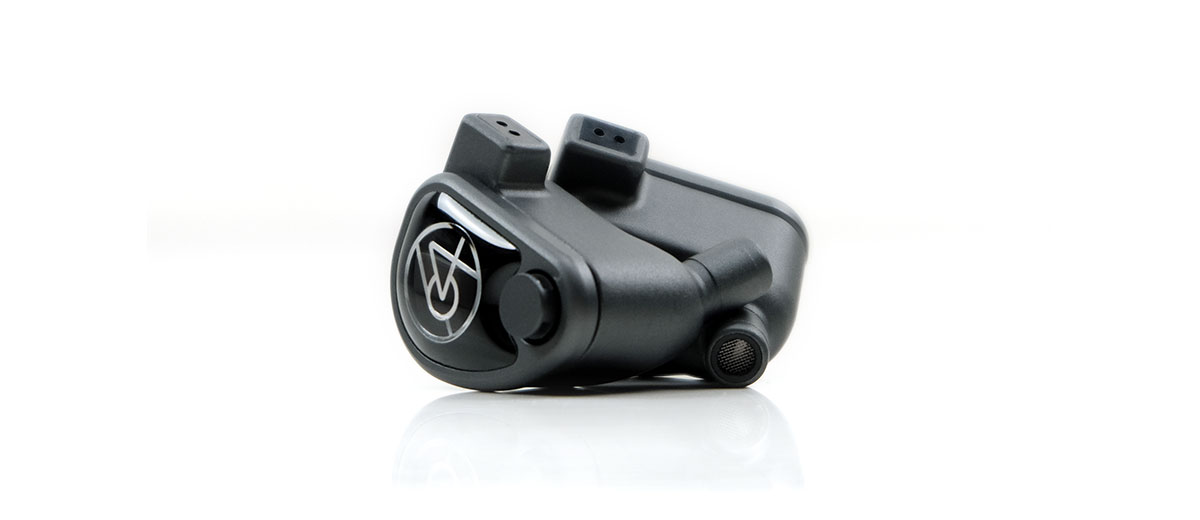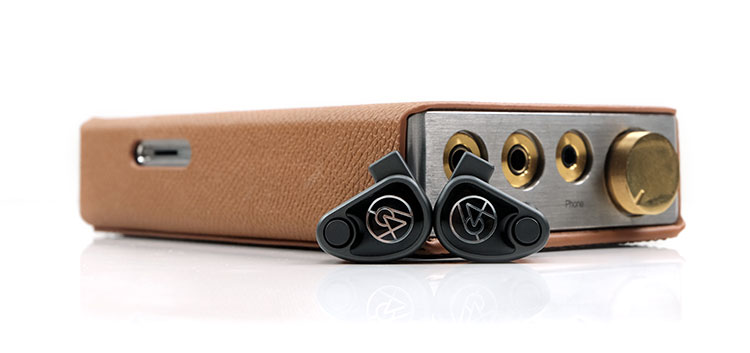Sound Impressions
Summary
The U6t has come a long way technically from the original A6 we reviewed back in late 2016. I suspect also the current A6t will also have similar improvements over the A6. You can read more about the detailed differences in our comparison section further down in this review.
Both old and new retain that same pleasing tonality but this time the U6t is decidedly more U-shaped as opposed to a mild L-shape from the original A6. You get a stronger sub-bass response, a little more separation from bass to mids to keep that in check, and midrange yielding much more clarity and space.
The treble still remains to the relaxed side but a tiny little uptick around the 9-10k marker combined with better mids presence from 1-4k mean vocal presences get a huge lift sounding clear with a slightly euphonic tilt and a very satisfying amount of body for a BA implementation.
To use a popular euphemism, the U6t is ‘musical sounding’ with impressive bass power, good vocal presence, and a non-fatiguing treble that adds just enough sparkle to prevent everything from being rounded and flat sounding.
I think someone has coined ‘everyday use’ before for a 1k monitor, I cannot see how the U6t does not also fall into that kind of description as it is a very likable sound signature.
Frequency Response
The U6t dual BA woofer tuning is excellent, if not the last word in naturally defined slam you can get from good quality dynamic drivers. Nevertheless, it doesn’t hold back sounding planted, with an above-average sub-bass presence up to 50Hz.
From there is a drop into the lower mids, more so than the original A6 so its punch is good but there is less ‘upwards travel’ in terms of warmth and bloom creating a stronger bass to mids separation.
It’s not a flat lower-mids though with a downwards curve from the upper-bass into the lower-mids and a low point around 1k. If you hear people speaking of any dipping in the U6t mids it’s really around the 1k marker which would affect chest vocal imaging more than falsetto or head voice performances.
From there the U6t is more aggressive and forward in its imaging with a push from 2k to 5k and then a drop beyond with a minor nudge around 8-10k.
That means female vocals are likely to sound a lot more forward than guttural death metal grunts but also pick up some necessary odd-harmonic crispness, a trait missing on the original A6 which did not have the tia high driver. The headroom is much better than I anticipated the U6t to offer based solely on the FR chart.
Timbre
BA timbre is typically dry and sometimes overly polished and clean sounding, particularly if an upper-mid FR is pushed to the fore.
On the U6t, I hear none of that until I pair it with a particularly bright-sounding source. It sounds very natural indeed with a woofer arrangement that errs to the thicker and slower side and a high degree of euphony from the midrange instrumental and vocal performances.
On the older A6, the title was also to the warm side but without that tia high and slightly muted midrange positioning the overall harmonic balance was too much to the even side giving it a very rounded and somewhat dull tone in comparison.
Here there is more vibrance, a slightly sweeter cleaner tone also with the m15 over the m20 but probably most importantly, a nice sense of space and air around the vocals enhancing the perceived clarity.
All of this is underpinned by a very good bass fundamental in lower-pitching notes. Most rhythm instrumentals except those kicking on the very low end will fall behind that pushed 2-4k presence region but they do not sound overly thin and lacking in presence unless you throw in the very flat-sounding mX module.
Staging
Staging is moderate with the twin peaks of the U6t’s elevated sub-bass and 2-4k range sounding the most forward in the FR. Both peaks balance each other very nicely with the m15 module with the m20 producing something a bit more bass-dominant and the mX producing the most mid-centric performance of the 3 modules.
Overall, I would class the staging quality as intimate over expansive but with more headroom than the original A6 and more spacious sounding in the mids compared to the original.
Most instruments aside from cymbal and hi-hat hits will line up just behind mixed or head voice or higher-pitched vocal performances which are forward front, and center. Less so for lower-pitched and chest vocals, especially around the 1k marker.
The low-end has a lot more depth and power than I was anticipating though if I am being hyper-critical it is a bit on the soft side below 50Hz compared to the dynamic drivers inside the Nio and the tia Trio. Both of these slam a little harder with more definition right at the bottom whereas the U6t is a little more diffuse and polite.
apex modules
Switching to the m20 module will lift that bass response a bit more compared to the m15 but doesn’t cast a huge veil over the mids and treble and will not turn the U6t into a dark-sounding bass machine. Mids might seem a little more relaxed but primarily due to the additional 3-4dB of bass presence sounding more forward in the mix.
Going with the mX module, you get more or less the reverse with a flatter bass response allowing that pumped 2-4k range to come to the fore more than the other 2 modules.
Personally, I think the U6t has a better balance with a stronger bass fundamental so the m15 gets my vote for not too much nor too little.
Synergy
Efficiency
The 64 Audio U6t is rated at 10Ω and 108dB SPL which is the exact same rating as the equivalent current A6t custom but slightly different from the original A6 which was rated at 22Ω and a more sensitive 115dB SPL.
As such the U6t is a little more efficient than the original by about 3-4 steps in low gain on our test Lotoo PAW Gold Touch DAP in SE mode.
In all honesty, the alternative two 64 Audio monitors we used for comparisons, Nio, and tia Trio, are fairly consistent in terms of load and SPL differential. None are showing huge gaps in terms of current requirements so overall the U6t is a daily easy monitor to drive from most DAPs.
The SE sensitivity is also low enough to avoid any unwanted background hiss from the higher noise floor DAPs we used for testing such as the HiBy R8 and the FiiO M15.
Pairings
Given its fairly easy listening response curve pairing the U6t is very simple with most DAPs producing a more than acceptable technical performance and good timbral synergy.
My own personal preference was for a slightly neutral but punchy source such as the PAW Gold Touch or the M15 or something with beautiful texture such as the LP P6 Pro.
My only reservation with the M15 was how it thinned out the upper mids compared to the LPGT meaning percussion sounded a little unnatural and that general forward upper mids took on a bit of sibilance or harmonic dissonance. Otherwise, both DAPs had a nice punchy low-end with good separation using the U6t.
Both the iBasso DX220 MAX and DX300 widened the staging more without thinning out the treble and mids of the U6t. Reservations here include a slightly laid-back tone from the DX300 where I would prefer some more urgency and physicality from that dual BA low-end.
On the low-end, the HiBy R8 and the P6 Pro did better though the R8 is not the most natural in the upper-mids whereas the P6 Pro teased out a really nice harmonic balance and richness to the U6t vocal performance.



